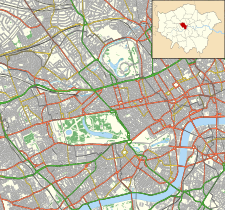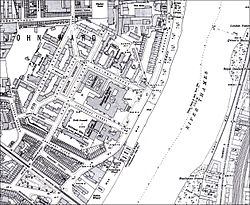Millbank is an area of central London in the City of Westminster. Millbank is located by the River Thames, east of Pimlico and south of Westminster. Millbank is known as the location of major government offices, Burberry headquarters, the Millbank Tower and prominent art institutions such as Tate Britain and the Chelsea College of Art and Design.
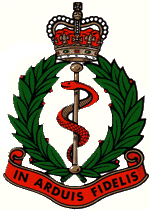
The Royal Army Medical Corps (RAMC) is a specialist corps in the British Army which provides medical services to all Army personnel and their families, in war and in peace. The RAMC, the Royal Army Veterinary Corps, the Royal Army Dental Corps and Queen Alexandra's Royal Army Nursing Corps form the Army Medical Services.

Woolwich Common is a common in Woolwich in southeast London, England. It is partly used as military land and partly as an urban park. Woolwich Common is a conservation area. It is part of the South East London Green Chain. It is also the name of a street on the east side of the common, as well as an electoral ward of the Royal Borough of Greenwich. The population of the ward at the 2011 Census was 17,499.

Woolwich Garrison is a garrison or station of the British Army. Geographically it is in Woolwich, in the Royal Borough of Greenwich. In terms of command, it is within the Army's London District.

Millbank Prison or Millbank Penitentiary was a prison in Millbank, Westminster, London, originally constructed as the National Penitentiary, and which for part of its history served as a holding facility for convicted prisoners before they were transported to Australia. It was opened in 1816 and closed in 1890.

Staff College, Camberley, Surrey, was a staff college for the British Army and the presidency armies of British India. It had its origins in the Royal Military College, High Wycombe, founded in 1799, which in 1802 became the Senior Department of the new Royal Military College. In 1858 the name of the Senior Department was changed to "Staff College", and in 1870 this was separated from the Royal Military College. Apart from periods of closure during major wars, the Staff College continued to operate until 1997, when it was merged into the new Joint Services Command and Staff College. The equivalent in the Royal Navy was the Royal Naval Staff College, Greenwich, and the equivalent in the Royal Air Force was the RAF Staff College, Bracknell.

The Bristol Royal Infirmary, also known as the BRI, is a large teaching hospital in the centre of Bristol, England. It has links with the nearby University of Bristol and the Faculty of Health and Social Care at the University of the West of England, also in Bristol.
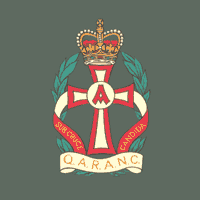
Queen Alexandra's Royal Army Nursing Corps is the nursing branch of the British Army Medical Services.

Queen Elizabeth Hospital is a hospital in Woolwich in the Royal Borough of Greenwich. It was opened in March 2001 and serves patients from the Royal Borough of Greenwich and the London Borough of Bexley. The hospital was built to accommodate the services previously provided at Greenwich District Hospital and Brook General Hospital, and is a Private Finance Initiative hospital. It is managed by the Lewisham and Greenwich NHS Trust.

Dame Emma Maud McCarthy, was a nursing sister and British Army matron-in-chief.

British Military Hospitals were established and operated by the British Army, both at home and overseas during the 19th and 20th centuries, to treat service personnel. They varied in size, purpose and permanence.

Initially the Herbert Hospital, renamed in 1900, the Royal Herbert Hospital was built as a restorative facility for British veterans of the Crimean War, and remained a military hospital until 1977. It was situated in southeast London, on the south side of Woolwich Common, on the western slopes of Shooter's Hill, in the Royal Borough of Greenwich. Today the former hospital buildings form a residential development known as the Royal Herbert Pavilions.

The Royal Army Medical College (RAMC) was located on a site south of the Tate Gallery (now known as Tate Britain) on Millbank, in Westminster, London, overlooking the River Thames. The college moved from the site in 1999 and the buildings are now occupied by the Chelsea College of Arts. The area around the college including the Tate, former military hospital and other adjacent areas is a conservation area. The former college buildings are now listed.

The Royal Naval Hospital Gibraltar (RNH Gibraltar), formerly the British Military Hospital Gibraltar (BMH Gibraltar), was a military hospital founded c. 1903 to provide healthcare for British military personnel and local sailors. The facility, located on Europa Road in the British Overseas Territory of Gibraltar's South District, comprised three buildings. The hospital was transferred to the Royal Navy in 1963. It closed in 2008, and underwent residential conversion that began prior to the hospital's closure.
Frances Macdonald, was an English painter known for her panoramic scenes painted in Wales, the south of France and in London during World War II.
Major General Robert Maxwell Johnstone was a senior British Army officer.
Beatrice Isabel Jones, was a British nurse who, after serving in several civilian hospitals, volunteered for military service. She served in the Second Boer War in South Africa and then later served during the First World War in Baghdad as matron-in-chief of Mesopotamia. She was one of the inaugural recipients of the Florence Nightingale Medal.

The Louise Margaret Hospital was opened in 1898 to cater for British Army soldiers' wives and children in the military town of Aldershot Garrison. It started with fifty-three beds and about half of its cases were maternity patients. In 1958 it became the Louise Margaret Maternity Hospital, and closed in 1995. The old hospital is part of a group of historic buildings with legal protection and, as of 2016, is expected to be used in a redevelopment project.
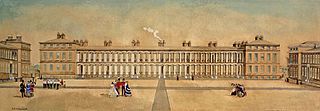
The Royal Marine Barracks, Woolwich was a military installation occupied by the Royal Marines and located in Frances Street, just south of Woolwich Dockyard. After the Royal Marines' departure from Woolwich it was renamed Cambridge Barracks, while the adjacent Royal Marine Infirmary was renamed Red Barracks.

Carol Margaret Kefford is a British nurse who has served as Clinical Director and Chief Nurse for Nuffield Health and since 2017 is a Colonel Commandant of the Queen Alexandra's Royal Army Nursing Corps (QARANC). She is currently the Chief Nursing Executive for HCA Healthcare UK.

